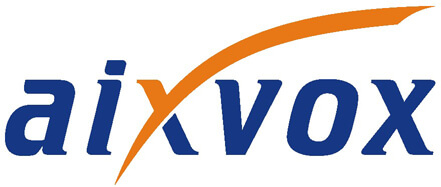5 Tips on How to Drive Digitalization Forward
So you want to open your SME to the potential benefits of digitalization? Detlev Artelt from Aixvox offers guidance on how to get started.

© ipopba | istockphoto.com
There’s 4G in the Himalayas, but not in your office. That is unfortunately still the sad truth in some parts of Europe. When you live in Norway, you are the lucky one, because network coverage with 4 G is up to 92.2%. But in some parts of Europe, you’ll wish you had your office in the Himalayas. For example: Germany 65.7% and Ireland 56.7.
And yet everyone is supposedly eager to drive progress forward and no longer belong to the digital backwaters.
So how does this fit in with the loud calls for digital progress and the digital future? If the technology is not ready everywhere in Europe, what about the will for digitalization?
The Digital Economy and Society Index shows a positive picture of the digital performance for the EU countries. Finland, Sweden, the Netherlands, and Denmark scored the highest ratings in 2019 and are among the global leaders in digitalization. They are followed by the UK, Luxembourg, Ireland, Estonia, and Belgium. But some other countries still have a long way to go, such as Germany.
For example in Germany, the trend study “On the Road to Digital Worlds” by Tata Consultancy Services (TCS) and Bitkom Research from 2018 even comes to the conclusion that three out of four companies in Germany with 100 or more employees see digitalization positively. So, contrary to expectations, the baseline is good, despite all the hurdles.
With the foundations in place and the will to change, there’s nothing stopping SMEs from joining the digital economy. In the following, we would like to give you five tips so that you too can bring digitalization into your company in the future.
1. Digitalization starts in your head
Digitalization does not begin with the purchase of new equipment and technology.
It starts in the mind – in the minds of decision-makers and managers. If Tom Moore from Production or Mr. Dupont from Sales would like to push ahead with digital communication, then this is laudable and will certainly infect some colleagues. But it is unlikely that processes or methods in the company will change unless Moore and Dupont convince the management.
If the management is also active, it means rethinking, informing, gathering know-how and transferring it to one’s own situation. Because even if there are many innovative tools and methods that digitalization offers, not all of them are suitable. In smaller companies, this rethinking can be done in internal workshops. For larger companies, it may be advisable to get an external consultant. The consultant analyses the current communications infrastructure, works with a team from different areas to determine the requirements for “New Work”, and uses this information to develop a concept for digitalization.
Once the roadmap has been drawn up, it has to be brought into the company, and the way needs to be paved for the company to be open to change. Because only those who dare can move forward. This can be initiated by the management itself, or you can put together a digital team. Make sure that the members come from as many different areas and hierarchical levels of your company as possible.
2. Dare to do new things
All that thinking is in vain if it is not implemented. This requires good planning and courage. As a decision maker, it is your task to convince employees and colleagues, and to put the plan into practice. Decide what you want to start with. Don’t attack all departments immediately by changing overall communication tools and using an abundance of collaboration tools. Rather, first select a sub-area and plan the rollout, just as you would for any other project. Depending on the size of the company, it makes sense to select a pilot group and have them test the tool or the method before the rollout starts.
You will probably experience the fact that there are always conservative colleagues who are very skeptical about changes, and who argue that you should “never change a running system”. Use the motivation of the other employees and your enthusiasm to convince them in the long run.
3. Use technology optimally
Skeptics won’t be convinced by you immediately, but you can get them on board bit by bit if you can demonstrate to them how much time and effort can be saved with the right technology.
Take the occasional meeting as an example: How much time do you spend in the car or in the train to go to meetings? And once you’ve arrived, many employees see this togetherness as wasted time.
A study commissioned by Sharp Electronics of 8,044 office workers in SMEs in Germany draws a clear but sobering picture: we spend 16.5 hours a month in meetings that are perceived as uninteresting and ineffective. Eight out of ten employees stated that they were significantly more productive at their workplace. More than half of the participants said that their meetings usually did not lead to clear results (55 %) and were also boring (54 %).
These results are mainly explained by a lack of diversity and flexibility. This is because most meetings follow the same pattern and, in many cases, no suitable rooms are available to support other meeting formats. In addition, the equipment in the meeting rooms is often outdated. Only just under one in five (21%) uses modern whiteboards to exchange information.
Many companies are therefore unable to speak of optimally-used technology or new working methods.
So take the opportunity and become a digital pioneer. Instead of the hundredth boring meeting, you can set up a video conference and enable your employees to work via video chat and other collaboration tools. You will see that productivity will increase significantly, along with employee motivation.
4. Put the customer first
Not only the employees are important in the field of digitalization – one success factor that should not be underestimated is the customer. In all of your efforts to convince your colleagues and employees of the benefits of digitalization, you must not lose sight of your customers. On the contrary, put the customer first.
It is a great strength of small and medium-sized enterprises (SMEs) that they cultivate proximity to the customer. This advantage must be exploited and the existing network must be integrated into the digitalization efforts. What’s your perspective, what is the customers’ perspective, and how can you both benefit?
The evaluation of support requests or complaints – however few they may hopefully be – can be helpful here. What do customers want? A support chat, faster response to emails, or a more personal approach? Even a short survey after a phone call can give answers here. For most customer wishes, it may not be necessary to completely plan and implement the customer journey, but only to make use of the existing technical possibilities. In the long run, however, it is necessary to rethink and plan how the newly gained digital possibilities and tools can be optimally used to optimize customer experience.
5. Really live it, don’t just talk about it
Convincing colleagues, using technology correctly, and involving the customer are certainly important processes, and together form the cornerstone of a successfully implemented digital strategy. However, the supreme discipline is to change the entire context of work, and to really live digitalization.
Getting away from counting hours and 9-to-5 attitudes, and moving towards result-oriented work, and working environments that also allow real productivity. The new way of working, or Work 4.0, is becoming more and more established, and with it various new working methods. In a digital world, sitting at your desk for eight hours or more every day should be obsolete. Many companies have already recognized this and offer their employees the option of working on the move or even partially in their home office. In the office, dismal open-plan offices have reached their use-by date, and have been replaced by different workspaces that allow different activities depending on the equipment. There are meeting zones and huddle rooms for video meetings. Small rooms for undisturbed telephoning, zones for relaxing and for a quick snack of coffee. Activity-based working has found its way into companies and has been very well received.
Whichever approach you decide on – the big all-around or the implementation of a small sub-project: Take note of the hurdles you may encounter and overcome them. Look for employees within your company or external consultants who can help you and who would like to join you in bringing digitalization into your company.
Detlev Artelt is CEO of aixvox GmbH, a manufacturer-independent consulting company in Aachen. He heads the Competence Group Unified Communications at the eco Association and the CG Business Communications at EuroCloud and is speaker and presenter at many international congresses and fairs. He is the publisher and author of the “voice compass” book series, the standard book for business communication.
Please note: The opinions expressed in Industry Insights published by dotmagazine are the author’s own and do not reflect the view of the publisher, eco – Association of the Internet Industry.





